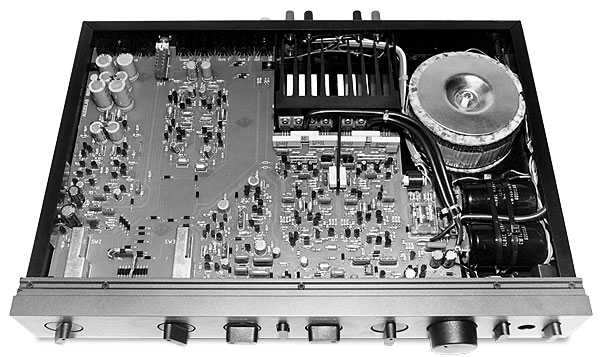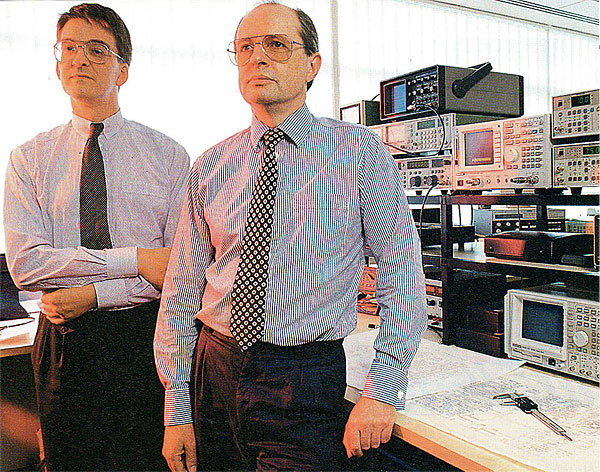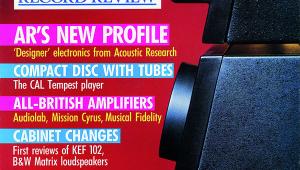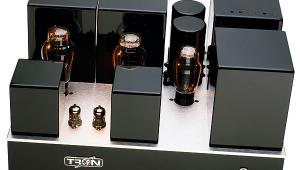Affordable Audiophile Amp Page 2
Self-Selection Bias
While the op-amps are differential and could so easily have been used with balanced supplies and near decoupling potentials, Audiolab's research on component sound quality showed that excellent results could be obtained with selected electrolytic capacitors, provided that these were properly biased. Hence the preamp supplies are single-ended, and use capacitors with a full 15V of polarisation.
A similar consideration arises in the power amplifier where frequently a large unpolarised electrolytic capacitor is utilised in the feedback chain. In the Audiolab 8000A this has been avoided by the use of a separate heavy integrating servo amp in the side chain, solely responsible for the DC stability of the amplifier. The main amplifier may then be DC coupled throughout, hopefully providing a better sound.
The power amplifier uses a differential input with constant-current sources liberally applied. This input amp is arranged with capacitative degeneration coupling the collectors, to provide an input that guarantees a non-slewing performance from the feedback looped amplifier.
Cross Examination
Symmetrical throughout, the signal passes via a second differential stage to the complementary voltage amp and the bias/driver configuration, which provides temperature stability and a freedom from crossover effects.
The output stage is arranged as a complementary triple, the parallelled sets of output transistors in collector coupled mode and direct-coupled to the load. Negative feedback is applied after the high-quality output relay. A protection system is also built in, to deal with over-current/short-circuit conditions, while excessive DC or subsonic signals trigger output muting.
The amplifier uses a substantial 250VA toroidal transformer, feeding specially produced high peak current reservoir capacitors, the supply being shared between the two channels. Constructed on a single full-size printed circuit board, with an absolute minimum of wiring, the 8000A is built to high engineering standards, and should be easy to service. The heatsink is located inboard, which further aids assembly and simplifies power transistor mounting arrangements.
![]() Sound Quality
Sound Quality
With such care having been taken concerning good matching, uniform responses, and a linear, consistent performance, it was gratifying to report that this amplifier's subjective hallmark was its neutrality. It was highly transparent to all signals applied, moving-coil or moving-magnet cartridge, tuner, CD and PCM tape, adding very little of its own character to the sound.

Its most severe aberration was a mild 'grain' and hint of 'sheen' added mainly to the sound of the moving-coil input. The moving-magnet input was felt to be a trifle cleaner in the treble, but both set a very good standard nonetheless.
Striking aspects were its Naim NAIT-like transparency, achieved without any tonal emphasis, and it also proved very strong in terms of depth and ambience. Stereo focus was very good, with strongly defined frontal images – perhaps a touch 'close-up' – and it demonstrates exceptional separation of the multiple strands in complex musical textures. 'Fine definition' is an apt description, this holding right through the frequency range. As for the bass, this sounded 'solid', extended and articulate in a manner not heard from some units costing considerably more.
Via the auxiliary input, the clarity marginally improved, and the reproduction standard from CD and PCM masters was in a class far removed from this amplifier's competition. It was found necessary to extract amplifiers costing around the £1000 mark from my loan stock (and elsewhere) in order to begin to reveal the limitations of the Audiolab 8000A, and this involved respectable brands such as PS Audio, Electrocompaniet and Naim.
Carry That Load
The preamp alone was tried with a Krell KSA-50 power amplifier, and it made a very respectable effort, indicating that this section is competitive with models in the £300-500 class.

We tried a number of loudspeakers, and found it drove the Quad 63s well, and also partnered the Celestion SL6 and SL600, and Spendor SP1, superbly. It would also take on loads equivalent to those of the Linn Sara and Yamaha NS1000, attaining a respectably loud sound level, while it clipped well and could be made to play very loud. In fact the 8000A is rather like the Krell KSA-50 in this respect, sounding like a 100W-per-channel model most of the time.
The only load we tried that showed insufficient 'go' was the Acoustat '2 + 2', a large electrostatic. And even here the sonic mismatch was nothing like as severe as might be supposed (on the other hand the speakers cost some ten times the price of the amplifier!).
After extended listening we were left with an impression of a lively, dynamic, transparent and powerful amplifier, with dependable neutrality giving low listening fatigue. It demands to be compared with top-class equipment, and then it is possible to show mild imperfections in the sound. For example, we heard a slight touch of clinical brittleness, the vaguest softening in bass definition, and a slightly 'close' frontal soundstage. But such objections pale into insignificance in the light of price versus performance.

Conclusion
In the 8000A we have one of those rarely encountered products: a unit that encompasses an admirable balance of visual design and finish, internal engineering, serviceability and sound quality. It also proves to be versatile as well as load tolerant, and almost as powerful as anyone could sensibly require.
Furthermore, this amp has been very carefully conceived, with an unusual amount of prior research and development. This means that there is every reason to believe that Audiolab will avoid the pitfall of continuous prototype development with the customer as guinea pig.
The Audiolab 8000A may therefore now be taken as defining the new standard for the price, offering exceptional user satisfaction plus real value for money.
























































